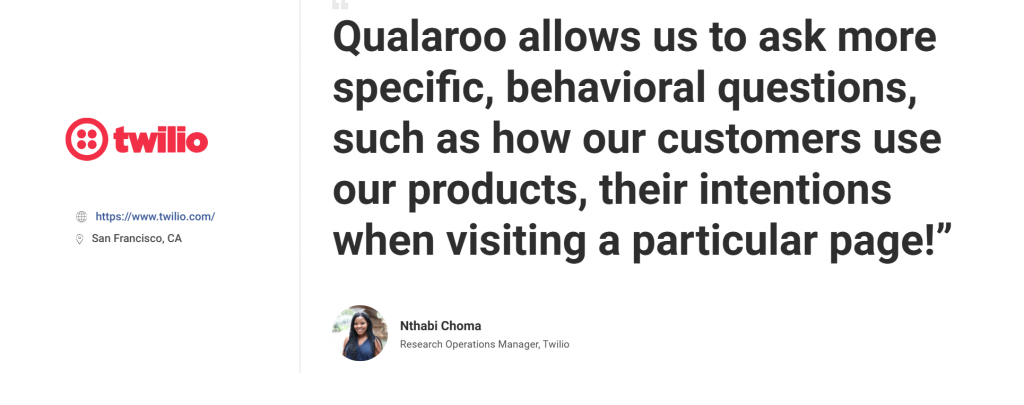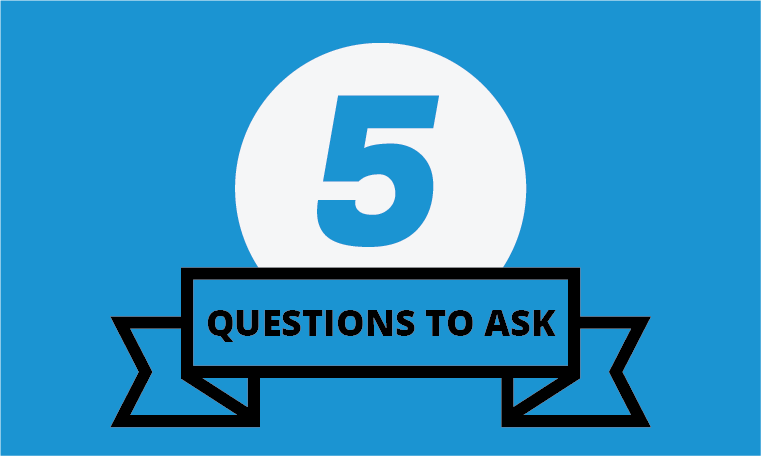Raise your hand if you also aggressively read reviews and ratings for every app you download.
For many users, reviews and ratings can make or break their minds about an app. It’s how they distinguish a good app from a bad one.
But they are equally, if not more, crucial for app owners. App ratings and reviews are solid indicators of app quality, popularity, and how users perceive it.
Take this tweet about the bad reviews for First City Monument Bank’s app for example:
Went to app store to download @MyFCMB mobile app for my sis, bad reviews everywhere, wow. You guys need to fix this. pic.twitter.com/mMSztKOEhN
— Kelechi (@kelxchi) August 7, 2020
So, if you want to improve app ratings and reviews for your app and attract not just traffic but loyal users, this article is for you.
What Are App Ratings & Reviews?
Ratings and reviews are two different metrics companies use to track the performance of their mobile apps. So, let’s look at each one separately.
App Store Ratings
Star ratings are a general norm for tracking the performance of mobile apps. All the app stores use star ratings for users to share their experience with apps they download.
Users can rate anything from one star to five stars, which makes up the average ratings of apps. So, it makes sense that the happier the users are, the higher star ratings they’ll give.
App Store Reviews
App reviews are written feedback shared by the app users on the App Store, Google Play Store, other review sites, or within the app. You can collect in-app feedback by asking users for their reviews while they use the app.
Ratings and reviews go hand in hand; ratings show the level of user satisfaction, and reviews give the context behind the ratings.
Now that we’re clear on app ratings and reviews, let’s uncover the benefits of gathering them.
Also Read: Customer Satisfaction Metrics To Monitor
Why Improve Reviews & Ratings for Your App?
As an app owner, should you be obsessed and try to improve app reviews and ratings? Here are a few points highlighting why mobile app reviews and ratings are crucial for your business.
Adds to Brand Experience and Image
When prospects land on your app store page, they immediately see the respective reviews and ratings. It becomes a part of their brand experience and affects how they see your brand.
So naturally, if the reviews are positive and ratings are high, they will have a positive brand image and vice versa. For this, try to maintain and consistently improve app reviews and ratings.
Boost Visibility for App Traffic
If you don’t know already, keywords are as essential to rank on app stores as they are for SEO. App stores pick up on app ratings and rank your app on keywords accordingly. So, if your app has low ratings, it won’t help it rank higher.
More so, whenever users search for keywords you are targeting, they see not only your app but the rating summary as well.
It significantly contributes to the first impression of the prospective users and, ultimately, their final decision to download or pass on your app.
Our advice?
Maintain healthy ratings and reviews to help your app rank higher on the app stores, meaning more prospects will be able to see your app and download it. This way, you’ll be able to improve app ratings.
For example, asking users about their feedback, performing App Store Optimization (ASO), influencer marketing, etc., are some ways to ensure you have good ratings and reviews. Don’t worry, we’ll cover how you can boost positive app reviews and ratings in detail later in the blog.
Increase App Downloads (Also Slash Your Marketing Expenses!)
As customers, we trust customer recommendations over flashy marketing. User reviews and ratings do just that; they help influence users’ decisions to choose your app over others. In fact, 79% of the users check reviews and ratings before downloading an app.
What does it mean for you?
If your app has positive reviews and high ratings, customers are more likely to download your app. And if they see negative reviews and low ratings off the bat, they will undoubtedly go for competitive apps with favorable reviews.
Kickass User Experience Through Contextual Feedback
Many apps give the option to review the app from within — using in-app surveys.
Benefit?
It’s a win-win for users and you.
Users don’t have to leave your app, and you get impartial, in-context, and authentic in-app customer feedback.
Watch: How to Collect Mobile App Feedback
You can even conduct customer satisfaction surveys and track the improvement in ratings over time. Doing so will significantly help you improve app ratings and also reviews. More so, you can create an effective feedback loop giving rich insights.
You may also like: 15 Best Mobile In-App Feedback Tools
Top 5 Reasons Why Your App Gets Negative Reviews
To improve app reviews and ratings, you must know why they are so poor.
If users give you poor ratings and critical reviews, it means there could be things you aren’t aware of and need to improve.
Here are some possible reasons why you might be flunking on ratings and reviews:
1. Poor Speed
Users don’t like to wait when using an app. So, if your app is slow, users will likely abandon it and leave a disappointing review.
You can avoid this by working on your app speed. Another way is to show a progress bar while users wait for a function to perform. This way, they will know an action is in progress.
2. Lack of Responsiveness
Nothing spoils a good mobile UX more than a non-responsive app. If users initiate an action, they should be able to complete it.
Here’s something you might be interested in: 15 UX Rules & Laws Every UX Designer Should Know in 2025
3. Instability/Crashing
If your app has bugs, it’ll crash while your users are using the app. If it becomes a frequent occurrence, they are sure to churn and leave a low rating and negative review.
Apps that depend on high memory usage can crash or perform poorly. Getting feedback at the prototyping stage can help here.
4. Battery drainage
I love it when an app drains my phone’s battery — said no one ever!
There’s nothing that makes users run to the app store faster to leave poor ratings and reviews than an app that irritates its users so much that they want to uninstall it.
5. Silent Majority
More often than not, only a fraction of your users rate your app. It means most users never voice their opinions about your app, and you end up with ratings and reviews from the extreme ends, which either give one or five-star ratings.
Now that you have the insights into what may be causing low ratings and reviews, let’s jump straight into the fail-proof tips to improve your ratings and app reviews.
11 Best Ways to Improve App Ratings and Reviews
Are you ready to give your app the high ratings it deserves and drown in tons of positive app reviews?
Here are a few tips and to-dos to improve app reviews and ratings.
These tips will answer how to get app reviews and are aimed toward improving the visibility of your app, successfully collecting user feedback, and analyzing it to improve the overall App experience.
Here we go!
1. Proactively Ask Users for Feedback
Don’t wait for users to review or rate your app. You’ll have to be proactive and ask them for their feedback to collect ratings.
There are two ways to go about it:
a. Collect app store ratings and feedback from within the app.
b. Ask customers for their in-app ratings and reviews using a feedback survey.
Now, in the case of the former, you can use these tools for each App Store:
- For iOS – SKStoreReviewController API
- For Android – You can use this query in the app code to access the review page on the Play Store “showAllReviews=true”
You can also use survey tools like Qualaroo feedback software to collect in-app feedback and ratings. It helps you create different surveys based on the rating scale, such as:
- Customer Satisfaction Surveys: To know how satisfied your customers are with your app.
- Net Promoter Score Surveys: To gauge the loyalty of your customers.
- Customer Effort Score Survey: To see how easy or difficult your app is to use for the users.
But if you want a written review, you can create surveys with open-ended questions to gather contextual insights.
Pro Tip:
One way to improve app reviews and ratings is by asking for feedback at specific touchpoints in the user journey when they are likely to be highly satisfied.
2. Target Users at the Right Time
As hinted in the pro tip above, different interaction points can affect users’ App ratings and reviews.
For example, if the rating prompts appear when the user is facing issues with your app, it’ll most probably reflect in the feedback review and vice versa.
Besides, you have to ensure that you aren’t asking them to review your app while they are in the middle of an action. It would help if you wait for the users to achieve their goals and then trigger your rating pop-ups.
One way to go about it is using advanced targeting. You can set triggers for your surveys and review pop-ups to appear after specific conditions are met or when the user performs a particular action within the app.
For example, in the case of an eCommerce app, it’s best to show a review pop-up to users after they have successfully placed the order.
Also, never ask for feedback from users immediately after they download the app. Give them time to explore your app and build a user experience they can share in the reviews.
3. Use Ad Campaigns and ASO to Boost Downloads
As mentioned earlier, the more traffic on your app means more app downloads and the higher are the chances of getting better user ratings.
So, the question is not only how to improve app ratings but also how to make more people see your app.
It’s simple; if you leverage App Store Optimization (ASO) the right way, you’ll be able to rank your app on relevant keywords.
Here are a few areas to focus on:
- Optimizing app title
- Adding relevant media to show how the app works and what it looks like
- Optimizing app description
- Using distinguishable app icon
Another way to skyrocket your downloads is by using ad campaigns to popularize your app on other platforms and increase your audience pool.
You can leverage ad campaigns and push advertisements across various channels to encourage potential users to download your app.
For example, many brands opt for popular social media platforms like Facebook, Instagram, YouTube, and Twitter to run ad campaigns and grab more eyes.
Doing ASO the right way can help you improve app reviews and ratings and increase mobile app retention.
4. Leverage Influencer Marketing and Featured Mentions
You’re missing out big if influencer marketing and getting your app featured isn’t a part of your marketing strategy. You need more user traffic on your app to improve app ratings and reviews, and ASO alone can’t win the battle.
Apart from running ads, your app needs as much authentication as possible from actual users. So, that leaves you with getting featured on third-party platforms, podcasts, influencer content, and other similar avenues.
For example, you can form partnerships with influencers and sponsor their videos to get reviewed or get a plugin in their content.
You can also look for outreach opportunities to get your app featured on a relevant website and Instagram posts covering the same topics as your product offerings.
Suppose you own a fitness app; you can reach out to fitness influencers on various channels and ask them to recommend your app to their followers or a website dedicated to fitness and health to promote it.
Here’s a real-life example:
The more visible you are on social media and the web, the more eyes your app will catch — leading to a boost in reviews and ratings.
5. Directly Address All Reviews
Again we would like to emphasize that only gathering reviews and ratings should not be the only goal. You also want to improve the user experience by simply interacting with the reviews.
Engaging with users by addressing the reviews directly on the app store is a great way to show you care about their experience and are actively working towards resolving their issues.
One thing we’d advise you is to focus on both positive and negative reviews. Why?
Because users who leave negative reviews might be on the verge of churn. To avoid this, you can follow up with a reply aimed at gauging the specifics of the issues so you can adequately address them.
What’s more, your responsiveness also makes others more confident of choosing your brand. They would know that you pay attention and act on the feedback given so they can count on you even when things go wrong.
6. Don’t Just Collect, Act on the Review Feedback
To improve app store ratings, merely collecting feedback is not enough. Ultimately, the goal is to provide a seamless user experience that will lead to scalability.
You won’t be able to boost positive reviews for your app if you don’t work on user feedback.
Simply launching new updates every month with minimal changes arent’ going to help your app. You must analyze the critical feedback and overhaul your website to offer the optimum UX.
It’s best to observe users’ most common challenges and issues to improve on those fronts with every new app update. Doing so will improve your app and let your users know they are heard.
For example, say users highlight that your current menu is confusing and can use a little fine-tuning to make it more organized. The next step for you is to create different variations of the menu and A/B test them with the users.
You can simultaneously collect feedback from users through surveys and see which version they like better. Once you’ve updated the menu, you can ask customers to rate your app again to improve the ratings.
7. Make It Easy to Find Help
It’s about time we mention the cliché “Prevention is better than cure.”
It’s a good practice, nonetheless.
You wouldn’t have to worry about negative reviews if you resolved the issues beforehand.
So, why not make it easy for customers to contact customer support at every touchpoint in their journey and resolve the issues in real time?
Of course, some problems take time to resolve.
Offering an easy way for users to get instant help will curb most issues before they make it to a negative review.
You can use tools like ProProfs Chat to add a live chat widget on your mobile app.
In fact, self-help tools like knowledge base platforms have also become a business favorite. They allow users to resolve small queries independently with streamlined information without contacting customer support.
With tools like ProProfs Knowledge Base, you can create a help section and add its link in your app, which will redirect users to the platform or will open a web view in the app.
8. Prioritize Users With Bad User Experience
There are multiple types of negative feedback; some focus on the lack of features, some on the app’s overall performance, while others may be directed towards the UI or customer support.
The question is, as a business, which reviews should you prioritize since all feedback is valuable?
Well, it’s best to first focus on the grave concerns or users who give you alarmingly low ratings. If you prioritize users on the verge of churn, you’ll be able to stop them from abandoning your app.
You can leverage branching logic to target users that give you a low rating, like one or two stars, and collect contextual insights to improve in those areas.
This is better than simply getting rated poorly, replying to the user to ask for feedback and waiting for them to respond — even as they get busy downloading another application that they find online and forget to respond to you.
It’ll be even better to let the users know once you resolve all their issues so they know about your efforts. This way, you can even ask them to update their app ratings and reviews for the better.
9. Target Silent Majority Through Gamification
The lack of participation of the silent majority is a significant obstacle businesses face while trying to improve app store ratings.
Does this mean there is no way you can convince the silent majority of your users to participate?
There certainly is – Incentives or gamification of the review process.
Users are more likely to submit the app ratings and reviews if they get something in return.
The incentive can be monetary, like a discount or access to exclusive/gated content or features. You can also offer in-app currency or benefits if you own a gaming app.
You can create popups like “Rate our app to get 10% off on your next purchase” using tools like Picreel with an incentive that users will be interested in.
10. Flag Offensive or Spam Comments
Talking specifically about app stores, as an app owner, you have the power to report reviews that violate the guidelines of the respective platform.
If a review has spam content, offensive material, and words, you can get it removed by flagging it. This way, you don’t have to revert to such reviews and be done with them.
11. Leverage Multiple Channels to Collect Reviews
If you thought you could only collect ratings and reviews through your app, think again. You can gather reviews from users and improve app ratings in multiple ways, like:
- Push Notifications
You can launch push notifications asking users to rate and review your app once they complete a goal.
For example, if the user doesn’t respond to your rating prompt, you could re-target them with push notifications and ask them to reconsider rating your app if they had a good experience.
- SMS
If you think about it, SMS is the alligator of the marketing world; it can survive your coldest clients.
Even with marketing moving majorly to social media, SMS is still a very effective way to reach out to users.
Why do we say this?
SMSs have a staggering open rate of 97-99%. You can ask users to take a few seconds to rate and review your app with a link that takes them to the ratings and review page on the app store.
One of the popular marketing strategies still standing is email marketing. It’s very effective and garners a lot of engagement from the users. You can send attractive email copies and encourage users to rate or review your app using a link to the app store.
- Live Chat
Another excellent opportunity to improve your ratings and reviews is asking users through live chat software. Although, as we discussed, you shouldn’t ask users for reviews or ratings after a bad experience, you can do it if you were able to resolve the issues.
FREE. All Features. FOREVER!
Try our Forever FREE account with all premium features!
With Feedback Comes the Responsibility to Understand It
Does your job end with collecting the ratings and reviews?
Absolutely not.
You need to take a closer look at the feedback and take appropriate action to improve app ratings and reviews. But it is not viable, or even humanly possible, to look at each review manually if you get tons of reviews.
So, what can you do?
Getting a tool that can analyze all the free-form review feedback will be a start.
It is possible through sentiment analysis, a feature that examines all the reviews and picks out the most-used words and the emotions they represent.
Tools like Qualaroo have this functionality where all the condensed data from the feedback is displayed in a Word Cloud. The larger the word, the more it has been used in the reviews.
It’ll help you analyze all the collected responses and give accurate, actionable insights. This way, you can skim through the reviews effectively, get a bird’s eye view of your user experience, and find out users at risk.
Related read: 15 Best Mobile In-App Feedback Tools
Get Kickass App Review & Ratings Pouring In
To improve your app ratings, you need to reach out to your users at the right time: After positive interactions, crucial touchpoints in the user journey, or ask them from within the app.
Another thing you can do to improve app reviews is to increase the visibility of your app on the app stores. The more users your app has, the more reviews you can collect. You can also use in-app surveys to collect contextual feedback from users at crucial moments using advanced targeting.
Once you have the reviews and successfully analyze them, you can act on the feedback. It helps to prioritize the feedback based on its impact on the app performance and the UX.
It will ensure an impeccable user experience worthy of positive reviews and full-star ratings. For this to happen, you need a reliable customer feedback and survey tool to gather, manage, and analyze the reviews in a streamlined way.
 Tips
Tips
We’d love to hear your tips & suggestions on this article!
FREE. All Features. FOREVER!
Try our Forever FREE account with all premium features!

 We'd love your feedback!
We'd love your feedback! Thanks for your feedback!
Thanks for your feedback!







